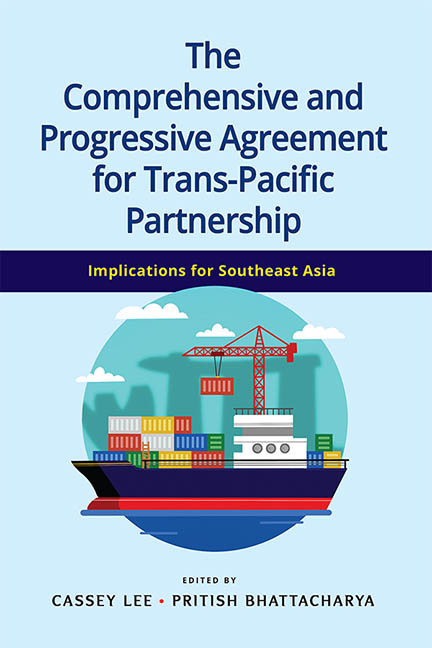Book contents
- Frontmatter
- Contents
- Preface
- Abbreviations
- About the Contributors
- 1 Introduction
- 2 The Economics of the CPTPP and RCEP: Asia Pacific Trade Agreements without the United States
- 3 The TPP and CPTPP: Truths about Power Politics
- 4 The Investment Chapter and ISDS in the CPTPP: Lessons from and for Southeast Asia
- 5 Intellectual Property in the CTPP and Access to Medicines A Thai Perspective
- 6 New Rules for State-Owned Enterprises in the CPTPP
- 7 Impact of the CPTPP on Japanese Manufacturing Affiliates in ASEAN
- 8 Reassessing Malaysia’s Export Opportunities in the TPP and CPTPP
- 9 Impact of the CPTPP on Vietnam
- 10 Should Thailand Join the CPTPP?
- 11 Indonesia, the TPP and CPTPP: Hold Your Breath
- Index
11 - Indonesia, the TPP and CPTPP: Hold Your Breath
Published online by Cambridge University Press: 08 October 2021
- Frontmatter
- Contents
- Preface
- Abbreviations
- About the Contributors
- 1 Introduction
- 2 The Economics of the CPTPP and RCEP: Asia Pacific Trade Agreements without the United States
- 3 The TPP and CPTPP: Truths about Power Politics
- 4 The Investment Chapter and ISDS in the CPTPP: Lessons from and for Southeast Asia
- 5 Intellectual Property in the CTPP and Access to Medicines A Thai Perspective
- 6 New Rules for State-Owned Enterprises in the CPTPP
- 7 Impact of the CPTPP on Japanese Manufacturing Affiliates in ASEAN
- 8 Reassessing Malaysia’s Export Opportunities in the TPP and CPTPP
- 9 Impact of the CPTPP on Vietnam
- 10 Should Thailand Join the CPTPP?
- 11 Indonesia, the TPP and CPTPP: Hold Your Breath
- Index
Summary
Background
The Comprehensive and Progressive Agreement for Trans-Pacific Partnership (CPTPP) consolidates most of the initial Trans-Pacific Partnership (TPP) provisions, yet suspends twenty-two provisions from the chapters on trade facilitation, investment, services, public procurement, intellectual property rights (IPR), and environment and transparency, effectively lowering the threshold for its enactment. The agreement establishes rules covering new and broader areas, such as e-commerce, and the procurement of environment and government. Moreover, while tariff schedules on 95 per cent of trade in goods are to be removed in the long term, the commitments to liberalize several key commodities, technical barriers to trade, competition, state-owned enterprises (SOEs) and small and medium-sized enterprises (SMEs), labour, and dispute settlement remain unchanged.
The CPTPP is expected to enhance trade among countries in the Asia Pacific through: the fundamental elimination of tariff and nontariff barriers for goods; developed access for services suppliers in a broader range of sectors; improved facilitation of investments; enhanced access to government procurement contracts; and updated rules to solve emerging trade challenges, which in turn will lead to higher flow of goods, services and investments within the region. In particular, the agreement is expected to advantage a number of sectors, including financial services, fishery and seafood, forestry, agriculture and food, and metals and minerals. Furthermore, it is estimated that the net benefit from liberalization of trade in goods and services to all participating countries will amount to roughly 0.3 per cent of their combined GDP in the medium term.
This chapter tries to assess Indonesia's interest in the CPTPP. It has several objectives. First, it discusses why Indonesia, in addition to its WTO membership, needs to increase regional economic engagement, from ASEAN's centrality in the ASEAN+ framework to the landmark mega regional economic cooperation in the current global economic scenario. Second, it explains the relevant pull and push factors behind this aim. Pull factors are associated with Indonesia's largest export destination countries—the United States and Japan. The push factors, on the other hand, are related to Indonesia's CPTPP competitors—Vietnam, Malaysia and Singapore. Third, the study elaborates on Indonesia's interest in joining global value chains (GVCs) to enhance involvement in the booming global production networks.
- Type
- Chapter
- Information
- Publisher: ISEAS–Yusof Ishak InstitutePrint publication year: 2021



